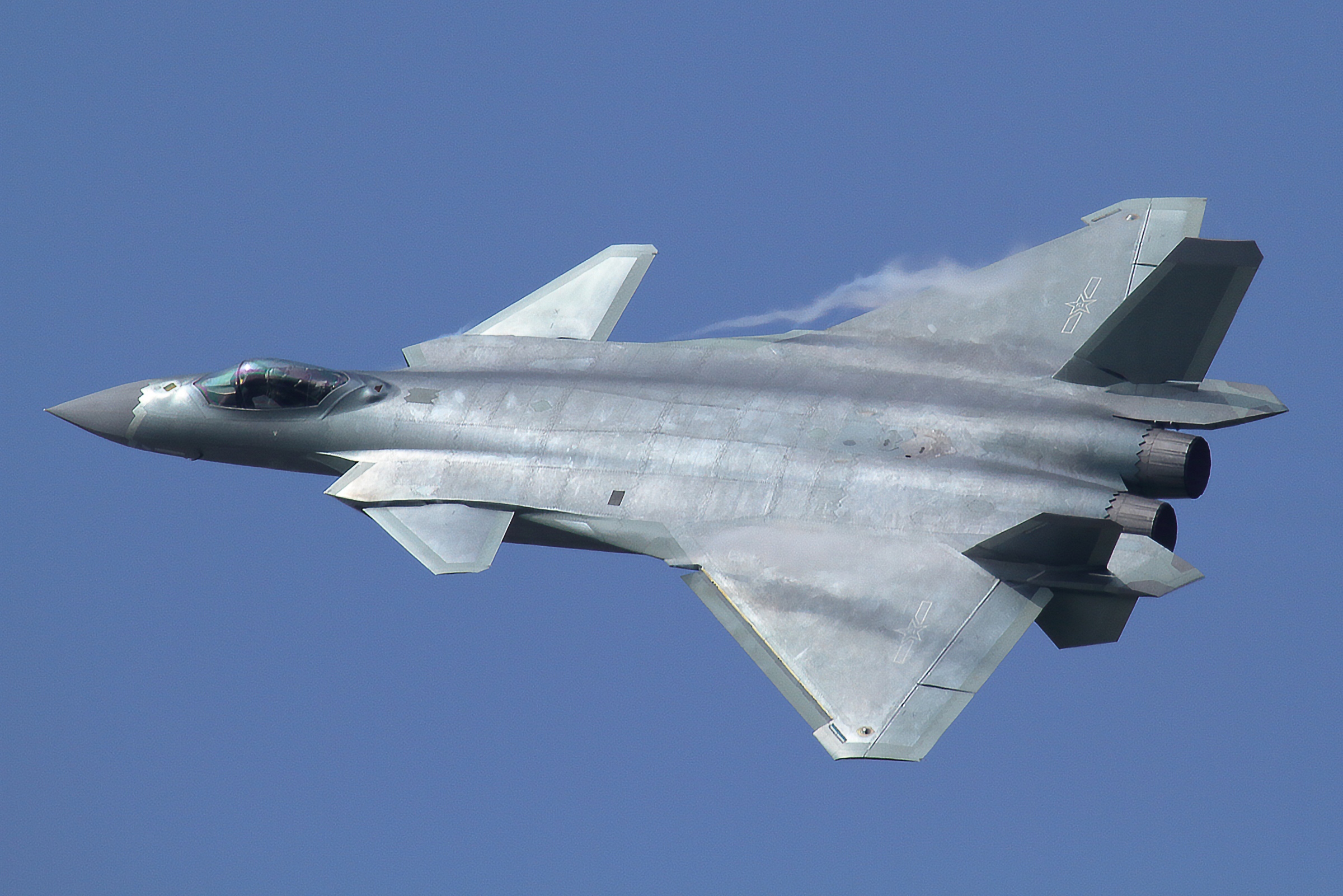
A flypast of a Chengdu J-20 during the opening of Airshow China in Zhuhai, China, on Nov?. 1, 2016. Photo by James Woodward.
The J-20 “Mighty Dragon,” China’s first purportedly stealth combat aircraft, is operational, Chinese state television reported on March 9, without giving further details.
Two J-20s in production configuration made a flyby at the November 2016 Zhuhai air show, and China watchers said at the time the debut indicated operational status was likely near. China is believed to have between nine and 12 J-20s in operational configuration, having begun low-rate production in 2014; eight other prototypes in a variety of configurations have flown since 2011 and are still involved in weapons tests.
What China defines as “operational” is a matter of conjecture, however. Pentagon officials said they think the announcement means the J-20 has entered formal operational test and will be flown in conjunction with a variety of other Chinese military aircraft to familiarize the broader force with the jet’s capabilities and experiment with concepts of operation. They said it may be a while before the aircraft begins flying actual front-line missions.
China watchers said the first operational base is likely to be the People’s Liberation Army Air Force base at Dingxin, in North-Central China, where a dozen new hangars have been built and J-20s with operational tailcodes have been observed.
The J-20 has been displayed with six internal radar-guided missiles, like the American F-22, but can carry both air-to-air and air-to-ground ordnance.
Images of the J-20 were first revealed on the internet in 2010 as then-Defense Secretary Robert Gates visited China, in a leak apparently meant to embarrass Gates, who had predicted that Chinese stealth fighters would not appear until 2020 and not enter operational service until much later. In 2012, the Pentagon’s annual Chinese Military Power report walked back projected J-20 operational service to “no earlier than 2018.”
In January, Gen. Hawk Carlisle, then-Air Combat Command chief, told Air Force Magazine in an interview that he doesn’t think the J-20 and Russian T-50 are merely “stealthy-looking” aircraft with future potential, but “I think they’re here now.” The need to counter them with new USAF capabilities is not “a futuristic discussion,” he added.
Air Force and Defense leaders—notably USAF Chief of Staff Gen. David Goldfein and Deputy Defense Secretary Robert Work—have said the J-20 benefitted greatly from Chinese espionage into US stealth aircraft development over the last 20 years. Its overall shaping is reminiscent of the American F-22 and F-35, and its chin-mounted electro-optical system is externally identical to that on the F-35. A number of apertures positioned around the J-20 are also very similar to those which comprise the F-35’s Distributed Aperture System, which provides the pilot with 356 degrees of visibility in day, night, and adverse weather, as projected onto the helmet-mounted display system. The J-20 has an active electronically-scanned array (AESA) radar, and dielectric panels around the jet suggest provisions for a robust electronic warfare and identification friend or foe capability.
Just as the initial operational capability versions of the F-22 and F-35 are not the final variants of those jets, the J-20s now being declared operational will undoubtedly evolve as well. Though initial production models carry the Russian AL-31 engine, a future powerplant, the indigenous WS-15, may give the J-20 supercruise capability. It’s expected to be available in 2018 or 2019.
However, one industry source noted that high-performance engines have “always been China’s Achilles’ Heel. They have a lot of trouble with the manufacture of high-tolerance components.”
China’s state-run news agency has acknowledged the J-20 is “not necessarily” designed for close-in aerial combat, and therefore not a direct analogy to the F-22 or F-35. Though a lot of effort was clearly expended to reduce the radar cross section of the J-20 as seen from the forward quarter, its round afterburning exhausts indicate it was not meant to have all-aspect stealth. This supports conjecture that the J-20 is meant to get in close to attack high-value aerial targets like AWACS, aerial tankers, large formations of combat jets, and possible surface targets, before breaking off and returning to base.
China’s J-31 fighter—now increasingly referred to as the FC-31, suggesting an exportable airplane—is still in development but bears a very close resemblance to the F-35. Goldfein, at AFA’s Air Warfare Symposium in February, showed a split-screen image of the F-35 mirrored with the J-31, highlighting their remarkable similarity. This is a “good thing,” Goldfein said, as it indicates that China takes the F-35 seriously and is anxious to match it.
The Air Force declined to directly comment on China’s announcement. A spokeswoman said that “for security reasons,” USAF “is not going to discuss the capabilities of other nations’ aircraft.” However, she added that the Air Force “retains a competitive advantage over any potential adversary with years of experience operating fifth generation aircraft in complex aerial exercises and deployed combat operations.”